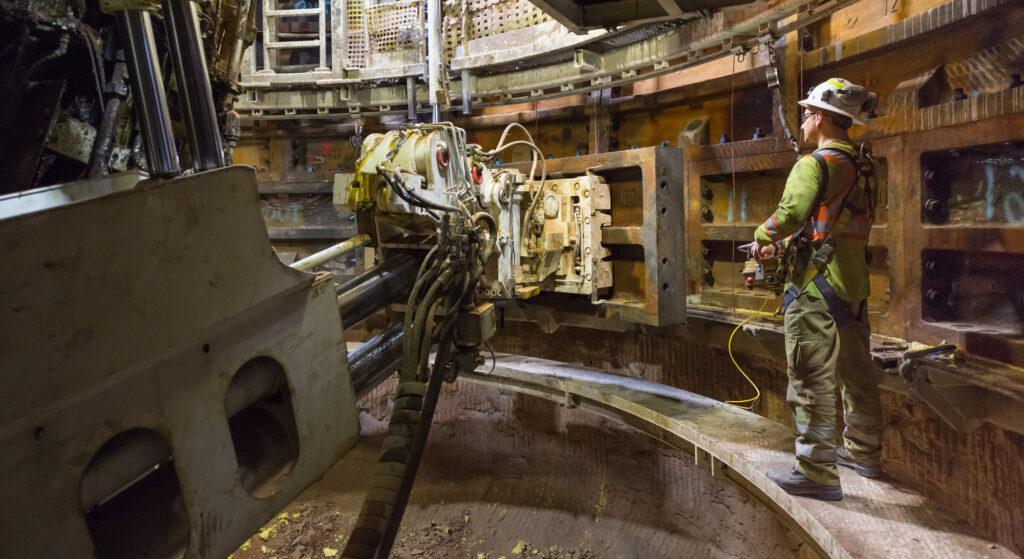In this age of technology and the internet, it can be difficult to find reliable sources of information. We’re here to be a resource for accurate information about the minerals industry, and the first step is debunking some common myths we hear about mining and minerals.
Let’s dive in!
Myth 1: Mining is a dying industry.
Progress has by no means stalled in the minerals industry. New mining sites and projects are being developed around the world as we speak. This is especially true when we zoom in on Saskatchewan. The exciting BHP Jansen Mine Project will be one of the largest potash mines in the world!
Saskatchewan’s mining sector ranks high in terms of investment attractiveness, and has enjoyed record-breaking production for many years in a row.
As the requirements for energy—and therefore minerals—shift, so too does the minerals industry. It’s a growing and vibrant industry capable of critical and ongoing change.
Myth 2: Technology is replacing jobs.
As with any industry that’s experiencing technological advancements, the minerals industry workforce is seeing a shift in its workforce, not a reduction. Innovation has been gaining momentum in recent years, responding to renewable energy movements and targets around the world.
New technologies and innovations are driving a next generation of mining professionals who are passionate and equipped to work alongside emerging technologies. And, as workforce requirements change, opportunities for retraining and new skills programs are being provided for current workers to update their expertise.
Myth 3: Renewable energy will replace mining.
The introduction of renewable energy such as solar and wind may be slowing demand in certain mining areas such as coal, but other sectors of the industry are thriving due to the shift to low carbon sources of energy. In fact, efforts to decarbonize our economies cannot happen without more minerals. This is why Canada has identified a list of 31 critical minerals – a list which includes minerals such as potash and uranium in which we rank among global leaders and other minerals key to clean technologies, advanced manufacturing and electric vehicles, and provinces, including Saskatchewan, have adopted critical minerals strategies.
The future of renewable energy and advanced technologies looks bright, but it can’t be achieved without minerals. Take electric vehicles for example. They require lithium for their batteries, lightweight aluminium for their bodies, copper wiring in the motors, and steel in the chassis. Minerals are needed for all of these pieces and more. So, while we look to reduce our reliance on fossil fuels for energy, the demand for other minerals which can provide for a low carbon future, such as uranium, grows in popularity and necessity.
Myth 4: Mining is an old-tech industry.
Quite the opposite! Advancements in artificial intelligence (AI) and other technologies help mining teams better explore and understand minerals before they start digging. Data gathering and automation are making the minerals industry more efficient and safe for workers.
As the innovation supporting network for Saskatchewan’s minerals industry, we have the privilege of bringing innovative technologies to the forefront with our DEMOday, Innovation Award, and AES Challenge. We’re seeing groups create solutions for heating, drying, energy saving, recycling and more.
We are also fortunate to have some incredible industry partners willing to test these technologies on their sites and improve their efficacy. Advancements in technology are being made everyday in the minerals industry.
Myth 5: Career opportunities in mining are shrinking.
The scope of careers in mining is changing and growing, beckoning in expertise from new industries and relying on a different skill set from workers. Now, mining companies are looking for people who are adaptable to technology, creative problem-solvers, and passionate about an improved minerals industry.
Fortunately, minerals programs at post-secondary institutions are preparing our next generation of workers for this shift. Graduates come prepared to think outside the box, work with advanced tech, and engage with challenges. We are excited to be part of the influx of diverse, prepared workers with our many education initiatives.
We look forward to the bright future of our industry in the hands of those steering towards sustainability, accountability, and efficiency.
These were just a handful of the myths we hear most often, and we were happy to address them with truth based on research, experience, and relationships. If you’re looking for more up-to-date information or want to be involved in the future of the minerals industry, let’s connect!



